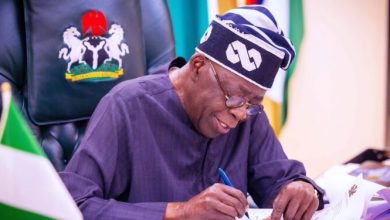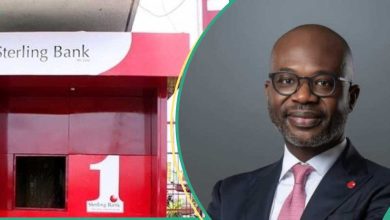Demola Sogunle : RUNNING STANBIC BANK AGROUND ?

Stanbic IBTC is a very unique bank . . By the size of its shareholders funds or equity ,the bank is tilted less below the tier 1 banks and more above the tier 2 banks; you could take it for either of the two categories .In terms efficiency , by its cost to income ratio , it is even more efficient than some tier 1 banks ; its share price is the most valuable and expensive per share in the banking industry . In the nutshell , . sometimes, analysts call it a diversified financial institution ; it cuts the image of a better run company with unique brand image of a diversified bank . However , its 2021 first quarter results indicate , the bank is becoming nothing but a shadow of its former self .The decay started in the last quarter of 2020 financial year ..Is Demola Sogunle led management of this bank fast asleep at the switch ?
The collapse at the bottom and top lines is ,no doubt , a direct indictment on the capability of the management of the bank led by Mr Demola Sogunle to control its destiny . . Virtually all the performance metrics pointed sharply southward in the period under review . Its first quarter results for 2021, Q1, are very disastrous . Its gross earnings nose dived by almost 26% to N45,726 B to N61,418B ; Profit Before Tax , PBT , and Profit After Tax , PAT, from continuing operations crashed by 50% y/y and -45% y/y respectively. The main drivers were a -24% y/y reduction in pre-provision profits and a 9% rise in operating expenses ,OPEX . Moreover while funding income declined -14% y/y, non-interest income fell by a wider margin of -29% y/y.
Furthermore , a negative result of N6.3bn in other comprehensive income (OCI) as against negative result of – N2.2bn Q1 20’20 ,consequently led to a seismic fall by -75% y/y to N4.5bn in PAT after OCI . In Q4 2020, Stanbic’s PBT declined by 18%, mostly because of a 71% y/y spike in loan loss provisions. PAT fell by a wider margin of -34% y/y because of a negative result of – N4.2bn in OCI
The negative impact of this is palpable on its miserable profit margins and earnings per share . Its pre tax margins cascaded from39.7 % to 26.6% while its net margins nosedived to 24.6% from 33.5% in the review period . ; its earnings per share equally dropped by 50% from 191 to 96 . The damage done to the first quarter margins would have been worse if not for a big drop in income tax by 77%
Proshare Nigeria, a high profile financial firm that specializes in corporate analysis in its reaction to the ugly results noted thus : We lower our recommendation on Stanbic IBTC (Stanbic) to Underperform from Outperform and cut our price target by 29% to N37.7 following a significantly weaker-than-expected Q1’21 set of results. Relative to our forecasts, the variance in earnings was due to negative surprises in funding and non-interest income as well as a negative result of-NGN6.3bn in other comprehensive income (OCI) vs our nil estimate. The negative surprise in funding income was underpinned by lower yields on earning assets, particularly from investment securities. Non-interest income declined by double-digits y/y due to a -78% y/y reduction in trading income from fixed income and currencies.
With respect to the operating segments, Wealth Management PBT grew 30% y/y. However, this performance was not enough to offset an -84% y/y decline in PBT by the corporate and investment banking business, and a pre-tax loss of -NGN1.8bn (vs. NGN880m Q1’20) by the Personal and Business Banking division. Consequently, we have cut our funding income and non-interest income forecast by -7% and -11% on average over the ’21-22f forecast period. These cuts underpin the -20% average reduction to our ’21-22f EPS forecasts.
It was a complete downturn for Stanbic . Two months ago , precisely ,23 of April , the ASI ended the week on a positive note, rising 43bp higher to close at 39,301.82 points. Investors bought names including STANBIC pushing the market to a 1.27% WoW close. ;Stanbic share price appreciated by 870bps , closing at ₦50.00 That exactly was the day STANBIC released its Q1’21 result. . . Today , at 22 of June , it sold for N39.55 per share ; by this , its investors who bought its stock that day at 50.00 per share have their share value depreciated by 21%
The current share price of Stanbic IBTC Holdings is N 39.55. The STANBIC stock closed its last trading day on Tuesday, June 22, 2021 at N39.55 per share , recording a 0.88% drop from its previous closing price of N39.90 . STANBIC began the year with a share price of N44.05 but has since lost 10.22% off that price valuation, ranking it 130th on the NSE in terms of year-to-date performance. Shareholders’ worries are further compounded by the fact that STANBIC has lost 14.02% of the stock’s value from May 24 to date.
With the bank’s share outstanding of 12.96billions the bank market value in the last two months depreciated from N648B to N512 .568 B losing N135.4 billions within that period from the day the miserable results were released .
One of the negativities of Stanbic Bank that worries investors is high level of debt .The bank has a debt to equity ratio of 52 % ; this is considered to be high .by analysts . But there is nothing bad about debt but for the risk involved when it does not add appropriate value .
Meanwhile STANBIC bank seems to be worried as its debt to equity ratio has reduced from 76.2% to 51.7% over the past 5 years.. Moreover, its debt is well covered by operating cash flow (236.9%).
All the above challenges are already taken a tool on the value of its stock. Currently , Stanbic IBTC Holdings’ value is considered over valued compared to its fair value and its price relative to the market
Its Price to Earnings (PE) ratio at 7.32x or multiples is competitive compared to the Nigerian baking industry and the market as it shows investors positive and optimistic disposition to pay more per share ; however , as at its present share price, analysts believed it is already overvalued going by its current fundamentals . STANBIC share at N39.9 is said to be trading above analysts’ estimate of fair value of N28.98 .
On the face value analysts believed STANBIC is good value based on its PE Ratio (7.3x) compared to the African Diversified Financial industry average (9.1x). ; it is also is good value based on its PE Ratio (7.3x) compared to the NG market (7.8x).But when its current fundamentals are factored in , it remains a value trap unless its half year results overturn these miserable in the first quarter .
STANBIC price to book multiples followed the same trend . as it is to be overvalued based on its PB Ratio (1.4x) compared to the Diversified Financial industry average (0.7x).
The uninspiring situation is confirmed by its Return on Equity of 19.3% which is considered low. However ,its Price to Earnings Growth Ratio is good value based on its PEG Ratio of 0.5x as it indicates its potential for better future earnings. .
Another issue making to be a bit cautious towards its stock is its unstable dividend track record All the above inadequacies are the products of its deprecating fundamentals . A detailed analysis of the bank unaudited account for the first quarter of 2021 exposes the inability of Sogunle led management to live up to the challenges before them during the period under review .
When it is said that one is a good or an astute banker ,what ,in fact , is meant is that one is a shrewd lender ; one who lends money profitably and safely .. To achieve those two values ,a banker is expected to be good at the core business of banking or maturity transformation. This is the ability to get a better spread between the rate at which funds are borrowed and the rate at which they are invested or loaned out . Moreover, tackled the risks of mismatches between assets and liabilities ,and between borrowing and lending rates . , Stanbic Bank used to prove it had what it takes to do this .However , in the last quarter of 2020 and the first three months of this financial year it has become a hard nut . .
.In the past few years getting good returns from earnings assets was a hard nut to crack . In the first quarter of 2021 ,low yield environment and high degree of risk in lending posed a serious threat as usual . But while other players were bruised ,for Stanbic Bank it was a cataclysmic misfortune .
The bank’s gross earnings were down by 26% to N45,726 from N61418 , an uninspiring performance linked to 23.5 % deep downturn in its interest income to N21,014 from N27,459 Though the management made some frantic efforts to beat down the funding costs ,bringing it down by 42.3% to N5,154 from N8942 but the damage done to the core business income was so deep despite a write back of N155m compared to an impairment of N1,967b in the first quarter of 2020. Its net interest income still came down by 14.3% to .N15,860 from N 18,517
Another attempt to cage the potential spoiler above was 16.7% jump in fee and commission income driven up from N19,228bto N22441B ,However , this was upturned by a more proportional rise in fee and commission expense of 23 .4% leading to a lesser percentage rise in net fee and commission income .Net fee and commission income inched up 16.2% from N17,908b to N20812b .Moreover , the biggest damage came from the trading which collapsed by 77% from N14417 b to N3,223B The final damage came from other revenue which was down to –N952M from a positive of N314m .
After interplay of forces , net non interest income backtracked by 29.3% from N32639B to N23,083B
The last line of hope where Stanbic had its edge over its peers and some first tier bank is in capacity to manage cost to income , a signal of efficiency . However , in the first quarter of 2021, this became a curse than blessing for the bank with this ratio rising to 69 percent as against 48% in the corresponding period of 2020 . The reason for this is not far to seek. Its total income crashed by 24% to N38,943 B from N51,156B while operating expenses increased by 9% from N24776B in 2020 to N26956B .The negative impact of this was on its miserable profit margins and earnings per share . Its pre tax margins cascaded from39.7 % to 26.6% while its net margins nosedived to 24.6% from 33.5% in the review period . ; its earnings per share equally dropped by 50% from 191 to 96 .
However , Stanbic’s dividend policy remains a saving grace . With its current dividend yield of 8.59% Stanbic IBTC Holdings’s dividend yield relative to the market average does not raise any eyebrow . , its dividend at 8.59% is higher than the bottom 25% of dividend payers in the NG market at 4.03% and is in the top 25% of dividend payers in the NG market at 7.86%
However , : STANBIC’s dividend payments have been volatile in the past 10 years., though dividend payments have increased over the past 10 years. In terms of payout volume ,and coverage with its reasonable payout ratio (62.9%), its dividend payments are covered by earnings.
The damage done to the first quarter margin s would have been worse if not for a big drop in income tax by 77%.But some analysts believed its half results may help to overturn the present misfortune of the first quarter .’ “Following higher interest rate expectations, looking ahead (particularly in H2 ’21), we expect funding income to start to benefit from loan repricing and higher asset yields. Our new forecasts imply a ’21f ROAE of 18.5%, slightly lower than management’s FY ’21 guidance of 20-25 “







